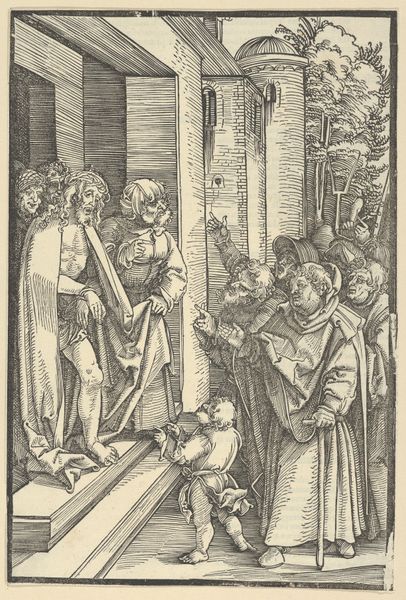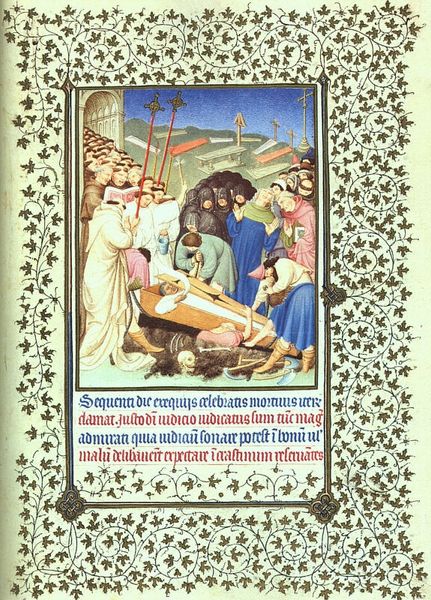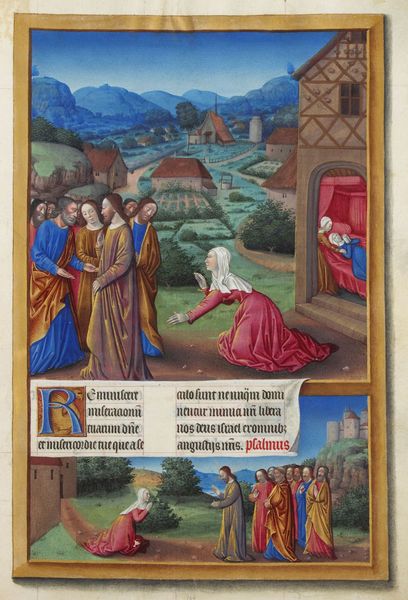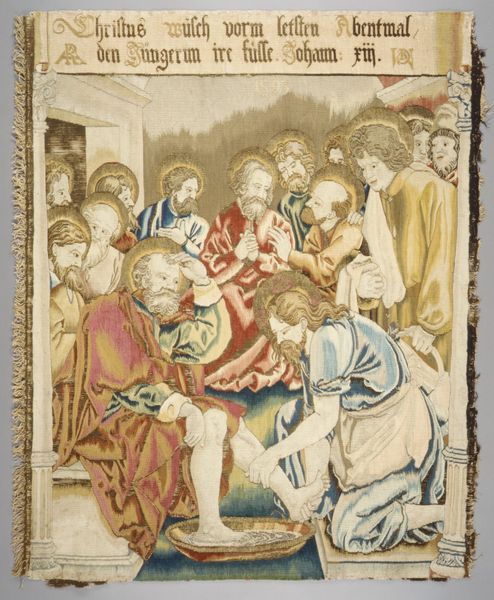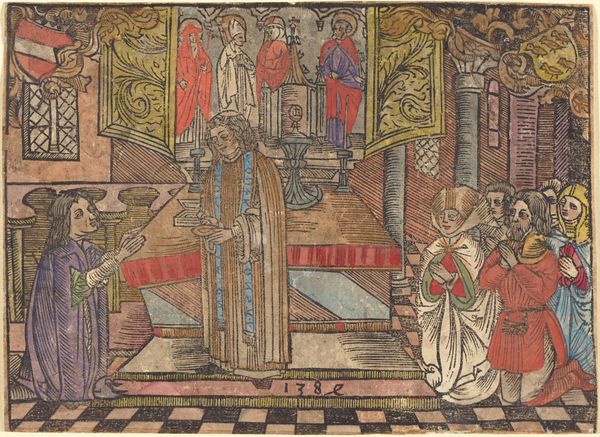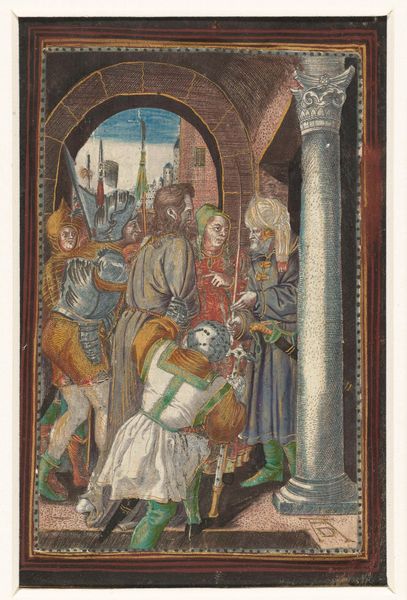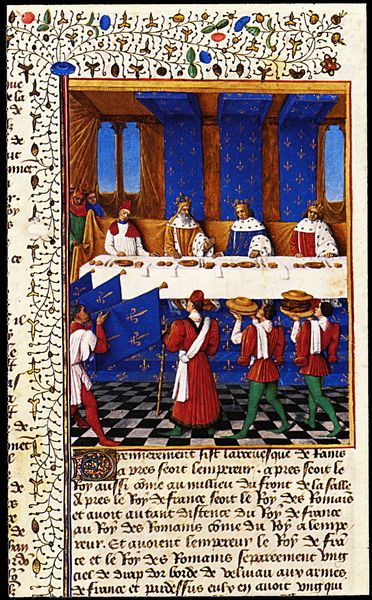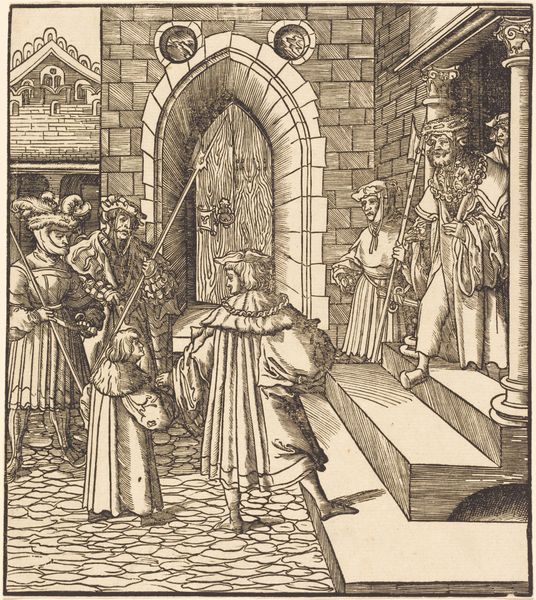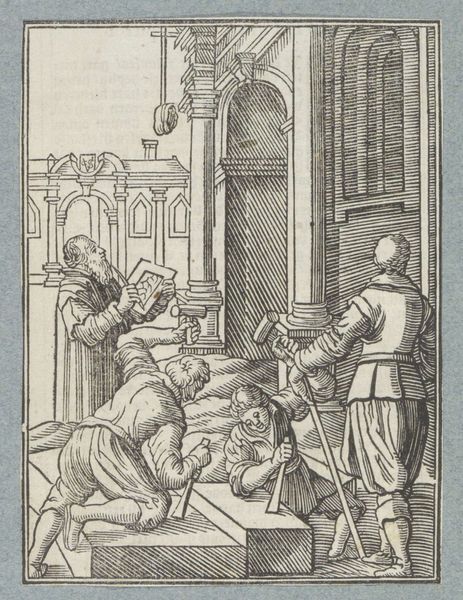
tempera, painting
#
medieval
#
narrative-art
#
tempera
#
painting
#
coloured pencil
#
history-painting
#
italian-renaissance
#
mixed media
#
miniature
Copyright: Public domain
Curator: This is Jean Fouquet's "Antiochus IV Epiphanes," painted around 1460, likely a tempera. It's a striking example of miniature painting, isn't it? Editor: It is certainly that! What first strikes me is the graphic intensity, the high-contrast colour palette, from the vivid blue horse decorations, right down to the blood. Curator: Graphic, indeed. Looking at the context, such miniatures, illuminated manuscripts, played a key role in disseminating historical narratives. It wasn't just about individual artistic genius. Consider the materials – pigments painstakingly sourced, the animal vellum, the labor invested by multiple artisans to create one luxury item. Editor: Absolutely, the materiality informs the form. I notice how the artist has constructed space, employing a slightly skewed perspective. But I also appreciate the rendering of textures. See how the figures’ faces, though small, possess individualized expressions – abject horror or merciless cruelty! Curator: Note too the rigid hierarchy on display; this image enforces the power structures of the ruling classes. Editor: Agreed. Yet, the details themselves! Fouquet masterfully uses line to capture light glinting off metal. The composition itself invites our eye to roam between the drama on the right and Antiochus’s authoritative position on horseback to the left. The architecture itself becomes a backdrop. Curator: We cannot divorce these technical flourishes from Fouquet's location at Tours, his likely workshop experience. That informs how we view this miniature as more than a religious object, a complex political message within a courtly setting. Editor: A persuasive observation. Still, I find the miniature primarily compelling for how its formal arrangement and rich details elevate a scene of massacre. This paradox seems a hallmark of Italian Renaissance, don’t you agree? Curator: Certainly, the context of production makes "Antiochus IV Epiphanes" a pivotal work for understanding illuminated manuscripts of the 15th Century. Thank you. Editor: Indeed. And Fouquet's use of contrasting planes brings a chilling aesthetic, adding another level of interpretation, one where both political power and aesthetic choices are paramount.
Comments
No comments
Be the first to comment and join the conversation on the ultimate creative platform.


